How to Season Food

Mastering the art of seasoning is an essential skill if you want to create delicious meals. It might seem intimidating in the beginning, but actually, it’s quite an easy thing. All you need to do is practice, experiment, and taste. 5-Minute Crafts is ready to assist you in this by showing you our guide to proper seasoning.
I. Guide to salt
1. Varieties of salt
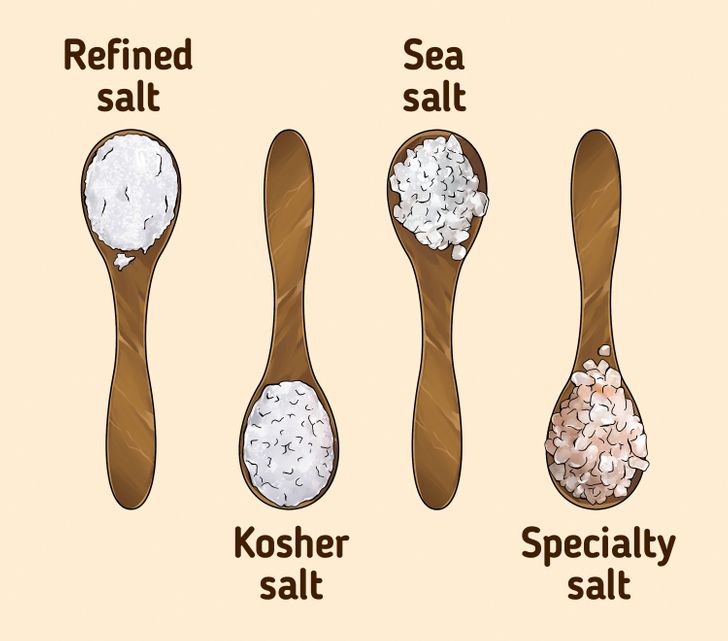
There are several types of salt. They differ in taste, texture, and sodium content.
🧂 Refined salt (regular table salt) is heavily ground, with tiny crystals. It can be iodized, which means there is iodine added to this type of salt.
- It’s great for seasoning dishes during the cooking process.
- It’s a preferred type of salt for making bread and baked goods, as its fine grains dissolve more easily.
🧂 Kosher salt is coarse-grained salt, with larger crystals, cleaner and lighter in taste than table salt.
- As it’s half as salty as table salt, you need to use twice the amount of Kosher salt.
- It’s great for making seasoning blends and spice rubs.
🧂 Sea salt is produced by evaporated seawater and can be sold in different colors and forms, like flakes or fine or coarse crystals.
- It’s great to use as a garnish or condiment, not for just seasoning the dish during cooking.
🧂 Specialty salts and seasoned salts, like Himalayan pink or black salts, garlic salts, or celery salts.
- Specialty salts are great to use as a garnish or condiment.
- Seasoned salts are good for making seasoning blends.
2. How to add salt during cooking
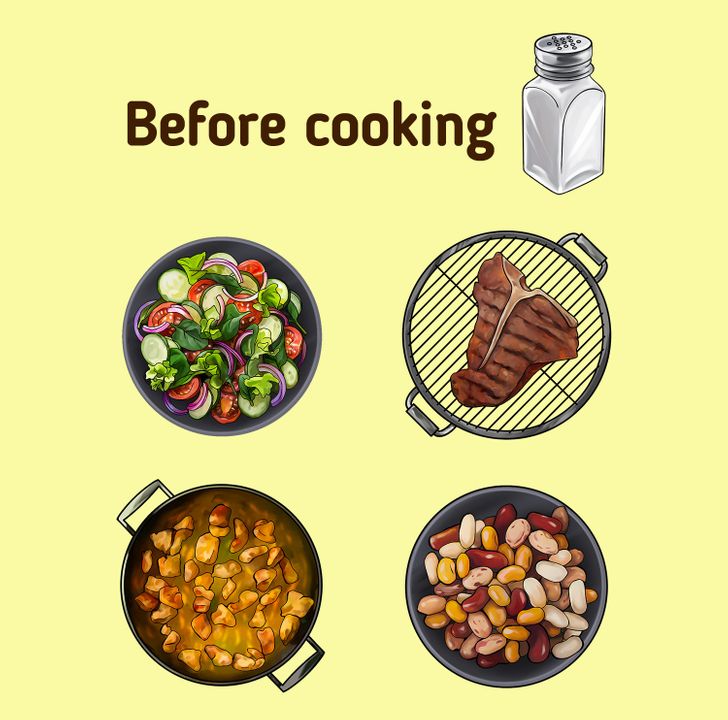
Salt can be used in both savory and sweet recipes to enhance the flavor of the whole dish. The timing of seasoning also plays an important role in bringing out the tastes in different foods.
🧂 Before cooking:
- Raw vegetables: Add salt to crisp juicy vegetables, like cucumbers or cabbage, before putting them in your salads. This will help to get rid of the extra moisture that would otherwise make the dressing watery.
- Grilled meats: This will help to draw out the moisture on the surface and make the meat drier. With this, you will be able to achieve a crisp and deeply seasoned crust. Fish should also be salted before cooking.
- Meats and vegetables for stews: Seasoning them with salt beforehand will help to make the taste of the dish more intense.
- Dried beans: Before cooking, soak them in water, adding 2 teaspoons of salt per quart. This will help you to reduce the cooking time greatly.
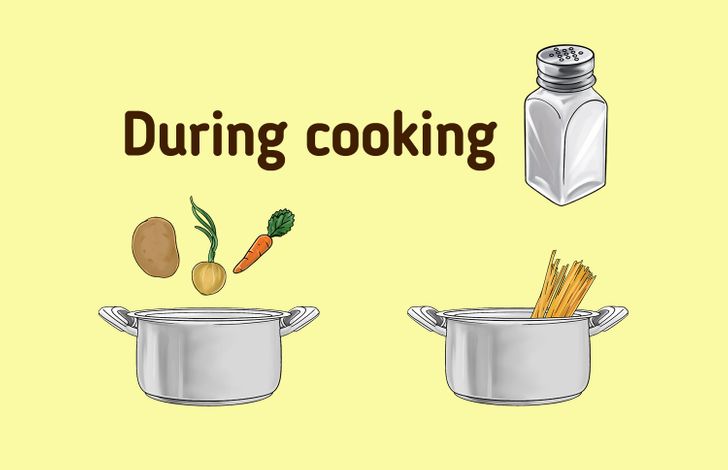
🧂 During cooking:
- Cooked vegetables: Salt the water before tossing veggies in it. This will help you to speed up the process of cooking and minimize nutrient loss.
- Starchy ingredients (pasta, rice, and potatoes) and starch-thickened sauces: Salt the water beforehand to improve the flavors.
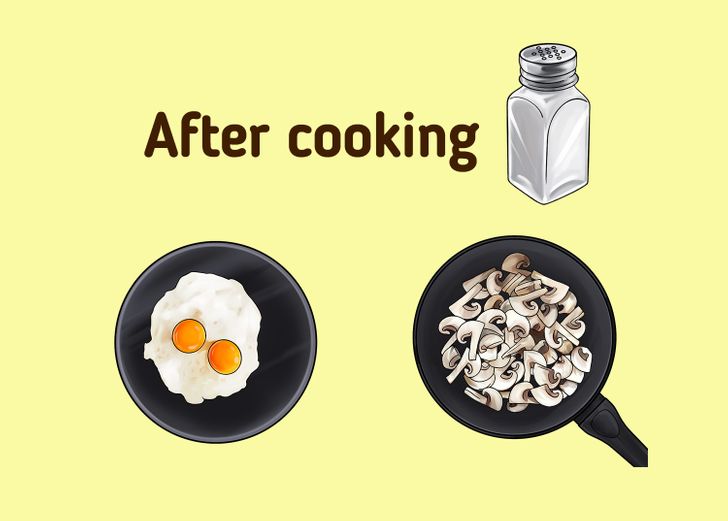
II. Guide to pepper
1. Varieties of pepper
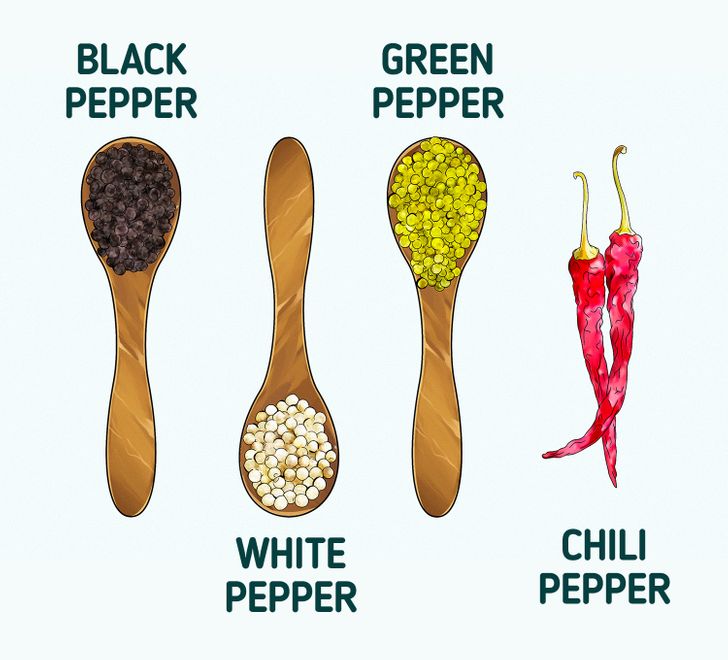
Flavors of pepper pair well with a lot of savory foods. If salt helps to enhance taste, pepper makes them bolder. There are lots of different types of this spice. Some of them are:
🌶 Black pepper — deeply flavorful, with a brash and punchy taste.
- It’s great for adding to meat, fish, vegetables, salad dressings, soups, stir-fries, pasta, eggs, and more.
🌶 White pepper — has a more complex, earthy, and musty taste.
- Add it to creamy soups or chowders, marinades, and stir-fries.
🌶 Green pepper — has a mildly tart taste full of heat, but it lacks complexity.
- Add it to lighter foods, like vegetables, chicken, and fish, as well as in sauces, salad dressings, potato salads, pasta, and spreads.
🌶 Chili pepper — since there are various types, the taste can range from more sweet and mild to more smokey and hot.
- Experiment and put it into your everyday dishes if you want to add some “heat” to them.
2. How to add pepper during cooking
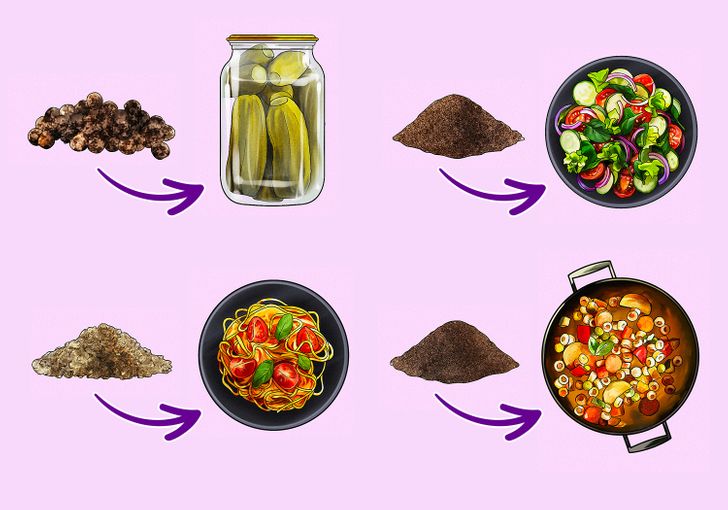
Pepper can come in a variety of grinds, which affects its taste. Usually, the bigger the pepper pieces, the longer they will retain their flavor.
🌶 Whole peppercorns:
- They have the freshest aroma and taste.
- If freshly ground, they offer more flavor than pepper that is already sold ground.
- Use whole peppercorns when pickling or using for marinades, stocks, blends, pot roasts, and soups.
🌶 Cracked pepper:
- Use large pieces of pepper berries.
- They’ll give a burst of flavor to food.
- Use it in salads, pasta, salsa, soups, or rub it with oil into raw meat before cooking.
🌶 Coarse pepper (large grind):
- It has a more volatile taste and aroma than finer ground pepper.
- Use it in salads, meats, poultry, fish, vegetables, and cottage cheese.
🌶 Medium, fine, and extra-fine ground pepper:
- Typically sold in shaker varieties, it has less flavor than the rest.
- Use it to season to taste and blend quickly and smoothly into your dishes.
III. Guide to seasoning
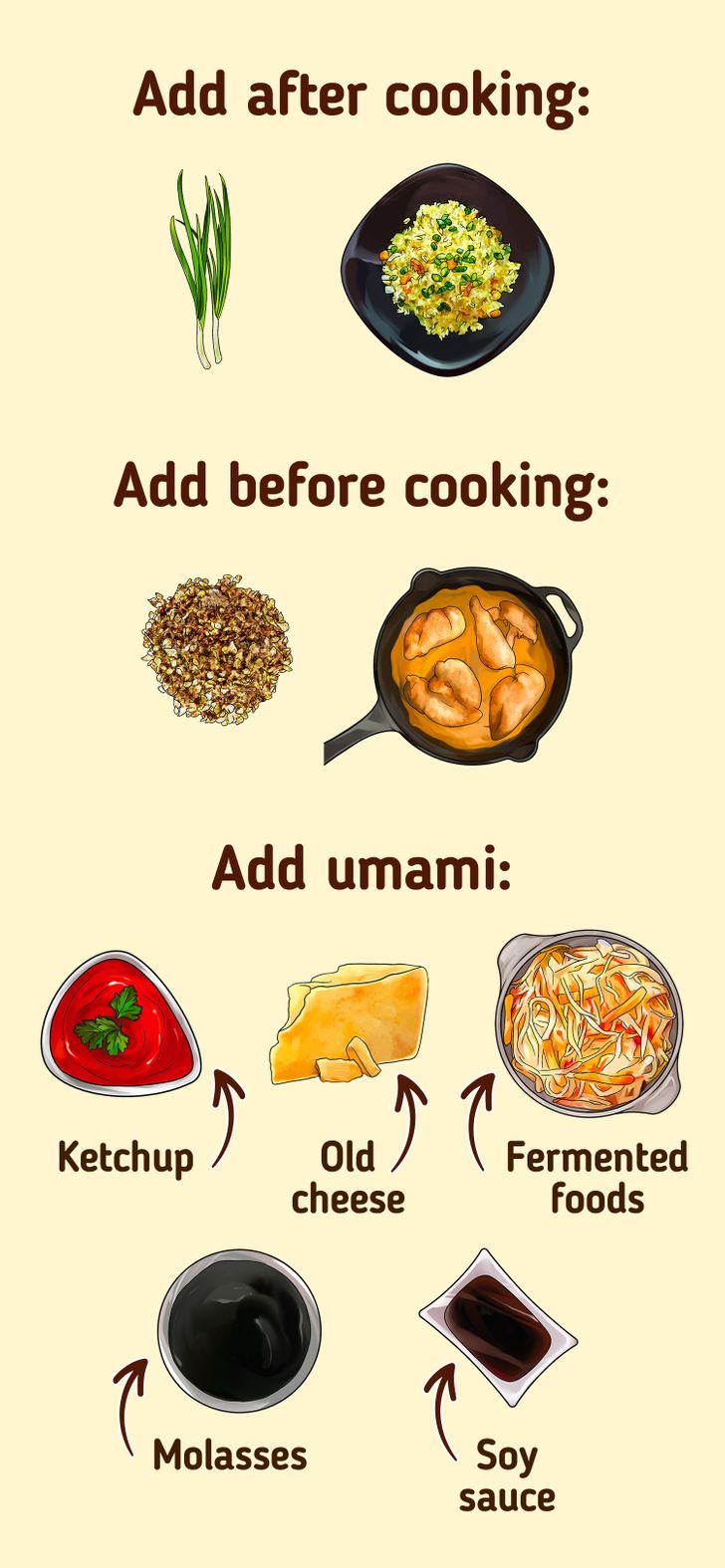
It’s also important to add other spices, herbs, or even juices to create a delicious dish. Here are the tips:
🌿 Fresh herbs should be added around the end of the cooking process as they require little time to open up their taste.
- Delicate herbs like dill, chives, cilantro, basil, parsley, and mint should be included just before the end or added to the dish before serving.
- Herbs like thyme, rosemary, and oregano can be added in the last 15-20 minutes before the end.
🌿 Dry herbs should be added at the beginning of the cooking process, as they require more time to release their taste.
🌿 For quick-cooking dishes, add herbs to other ingredients but add spices together with salt.
🌿 For long-cooking recipes, add herbs and spices in the last 45-60 minutes of cooking.
🌿 Pair lemon juice with mild and delicate-favored foods, like fish and seafood, as well as with vegetables like asparagus, green beans, broccoli, beets, Brussels sprouts, mushrooms, chicken, sauces, and soups.
🌿 Don’t use more than 3 herbs or spices in one dish unless a recipe calls for it (for example, in Indian cuisine).
🌿 Make the flavor more intense by using umami-rich ingredients (those that have a pleasant savory taste), like ripe tomatoes, aged cheese, anchovies, fermented foods, cured meats, ketchup, molasses, tomato paste, fish, soy, oyster sauce, or Worcestershire sauce.